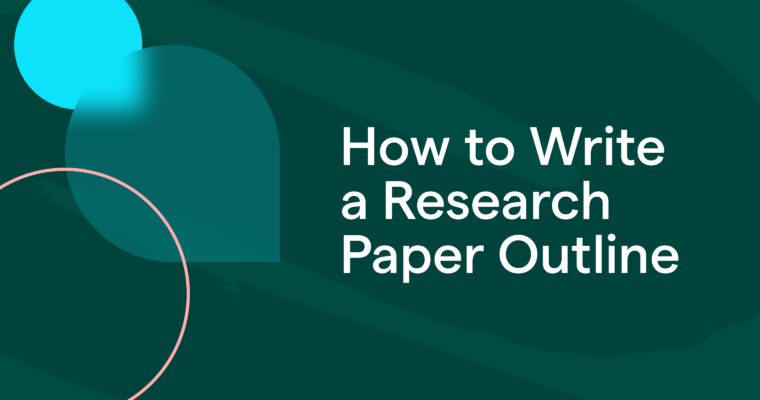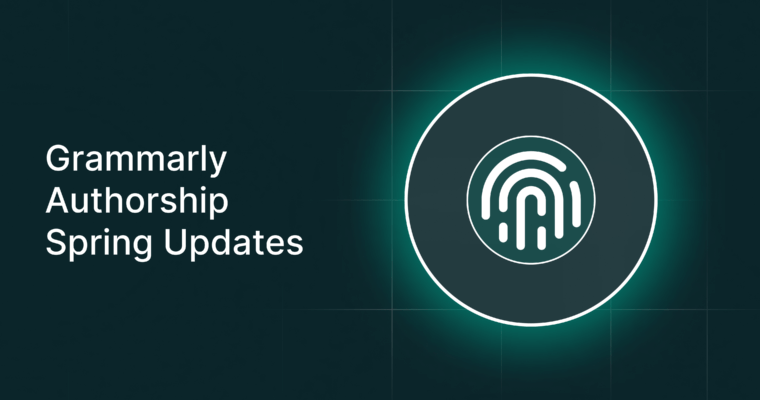
- A research paper outline organizes your thesis, topics, and evidence into a clear structure to streamline the writing process.
- The three main outline formats—alphanumeric, full-sentence, and decimal—suit different assignment types and levels of detail.
- Outlining improves clarity and flow by ordering ideas logically and revealing gaps early.
- Creating an effective outline involves planning, organizing, formatting, and refining your ideas.
- Choosing the right format—formal or informal—boosts efficiency and keeps your writing aligned with your goals.
Outlining is a key part of the writing process that helps you organize your notes, research, and main ideas into a logical structure, often using numbered or bulleted lists. For research papers, a well-crafted outline breaks down complex topics into clear sections and subpoints, helping you write with greater focus and efficiency.
In this guide, we’ll walk you through how to create a research paper outline step by step, with examples of the most common formats.
Table of contents
- What is a research paper outline?
- Benefits of a research paper outline
- Types of research paper outlines
- 7 steps for outlining a research paper
- Research paper outline FAQs
What is a research paper outline?
The outline is an integral part of writing a research paper that organizes your main ideas, research, and supporting details into a logical structure, usually with bulleted or numbered lists.
You should typically create a research paper outline after choosing a thesis and gathering sources, but before the first draft. This stage allows you to make structural decisions early, rearranging, adding, or removing content without wasting time rewriting later.
Research paper outlines vary in depth but typically list each section or paragraph, along with supporting evidence. The format and level of detail depend on your writing style and the assignment requirements.
Benefits of a research paper outline
A research paper outline helps you organize your ideas and structure your argument before drafting. It helps to think of a well-crafted outline as a roadmap from your initial ideas to a coherent first draft.
- Stay focused and on track: Keep your writing aligned with your main idea and avoid unnecessary detours.
- Improve clarity and flow: Present your ideas in a logical order that’s easy for readers to follow.
- Write with greater efficiency: Reduce time spent on reorganizing content mid-draft by planning ahead.
- Uncover gaps early: Spot weak areas in your argument or missing research before you start writing.
Types of research paper outlines
Research paper outlines can range from simple lists to detailed structures that organize every section and subpoint. The right type of outline depends on your assignment, the complexity of your topic, and your writing style.
In academic writing, formal outlines are especially valuable because they support the rigorous standards expected in research papers. These outlines help you systematically organize your thesis, arguments, and supporting evidence while integrating information from multiple credible sources.
By structuring your outline carefully, you can track where each citation fits, ensure your sources are accurately represented, and maintain a logical flow that strengthens your analysis.
The three most common formats below offer varying levels of detail. Still, all serve the same purpose: to help you manage complex information, cite appropriately, and build a paper that meets scholarly expectations for clarity, accuracy, and depth.
- Alphanumeric outline: Best for general academic writing, this widely used format organizes content using Roman numerals, capital letters, and numbers. It’s quick to create, easy to scan, and ideal when you need a flexible structure for brainstorming or drafting.
- Full-sentence outline: Best for clarity and collaboration, this format uses complete sentences for each point. It’s especially useful in formal academic settings or group projects where clarity, detail, and shared understanding are essential.
- Decimal outline: Best for technical or complex topics, this number-based format (e.g., 1.0, 1.1, 1.1.1) provides a highly structured hierarchy that works well for detailed, multilayered research papers in scientific or technical fields.
7 steps for outlining a research paper
Step 1: Define your central idea and gather sources
Before outlining your research paper, start by defining your central idea—often in the form of a clear, focused thesis statement. This will serve as the foundation for your entire paper and guide the content of your outline.
Next, collect relevant sources to support your thesis. Strong research—both primary and secondary—helps shape your argument and may reveal new insights or correct misunderstandings early on. This step ensures you’re outlining with evidence in hand, not assumptions.
Step 2: Organize your ideas into topics and subtopics
Review your research and begin listing the main topics, subtopics, and supporting points that relate to your thesis. Keep related ideas grouped together, and focus only on content that directly supports your central idea—omit anything that feels off track.
For example, if your paper is about the impact of remote work on productivity, your main topics might be “Employee performance,” “Work-life balance,” and “Company infrastructure.” Under each, you’d include key findings, quotes, or stats you’ve gathered.
If you’ve already highlighted key quotes or data points, include them under the appropriate topics. While not required in every outline, these can save time later when you’re drafting.
Step 3: Choose the right outline format
Select the outline format that best fits your topic, assignment length, and the level of detail you need. For shorter or simpler papers, a basic alphanumeric outline may be enough. For more complex or technical topics, consider using a full-sentence or decimal outline for added structure and clarity.
Also, think about how you’ll use the outline—whether you’re working alone or sharing it with others. Sentence outlines are well-suited for collaboration, while decimal formats are ideal when precision is crucial.
Step 4: Plan the structure and sequence of your topics
Before drafting your outline, take time to decide the most logical order for your topics. Consider how your ideas build upon one another and what background knowledge your reader may need.
Some topics naturally depend on others for context, so structure your outline to guide your audience, especially if they’re unfamiliar with the subject. In many cases, a chronological or cause-and-effect order works best.
To show how this works in practice, let’s use the alphanumeric outline format to organize a sample paper on the topic of “remote work and its effects on productivity and collaboration”:
I. Introduction
II. Employee performance
III. Collaboration challenges
IV. Conclusion
This simple structure provides a clear roadmap for presenting your argument, ensuring a logical progression from start to finish.
Step 5: Create the framework of your outline
Map out your outline’s main sections or topics without diving into subpoints yet. This provides a high-level view of your paper’s structure, helping to ensure that your content flows logically.
At this stage, it’s easier to rearrange topics or identify areas that are missing. If something feels out of place or underdeveloped, you can still adjust your structure or revisit your research before getting too far into the details.
Continuing our remote work example, here’s what a basic framework might look like using the alphanumeric format:
I. Introduction
A. Background on remote work
B. Thesis statement: Remote work boosts productivity but challenges collaboration
II. Employee performance
A. Increased focus at home
B. Flexible schedules improve morale
III. Collaboration challenges
A. Fewer face-to-face interactions
B. Dependence on digital communication tools
IV. Conclusion
A. Restate thesis
B. Summary of key findings
C. Final thoughts on future trends in remote work
Step 6: Add more detail
Once your framework is solid, begin filling in each section with subtopics, supporting points, and any key evidence you want to include. Outlines often benefit from noting paragraph structure, such as topic sentences or key examples.
If helpful, you can include rough phrasing or sentence structure ideas—but don’t go overboard. The goal is to guide your writing, not to draft it word for word.
Let’s continue the remote work example and build out the full alphanumeric outline with additional detail:
I. Introduction
A. Background on remote work
1. Surge in remote jobs post-2020
2. Increased reliance on virtual communication tool
B. Thesis statement: Remote work boosts productivity but introduces new challenges for collaboration
II. Employee performance
A. Increased focus at home
1. Fewer workplace distractions (e.g., office noise, impromptu meetings)
2. Personalized workspaces lead to greater comfort and efficiency
B. Flexible schedules improve morale
1. Employees can align work with peak productivity hours
2. Greater autonomy contributes to job satisfaction and reduced burnout
III. Collaboration challenges
A. Fewer face-to-face interactions
1. Loss of spontaneous brainstorming sessions
2. Difficulties in reading body language and social cues over video
B. Dependence on digital communication tools
1. Overreliance on email and chat can cause miscommunication
2. Tool fatigue from managing multiple platforms (Slack, Zoom, Teams, etc.)
IV. Conclusion
A. Restate thesis: Remote work enhances individual productivity but complicates collaboration
B. Summary of key findings
1. Performance gains through focus and flexibility
2. Communication hurdles and social disconnect
C. Final thoughts on future trends in remote work
1. Future solutions may involve hybrid work models
2. Emphasis on better virtual collaboration tools and policies
Step 7: Revise to improve structure
Before moving on to your draft, review your outline for clarity and flow. Ensure that your topics are presented in a logical order and that nothing important is omitted.
This is a good opportunity to review your research notes and ensure that all key points are covered. A quick revision now can save time later in the drafting process.
Research paper outline FAQs
What is a research paper outline?
A research paper outline is a planning tool that organizes your main ideas, research, and supporting points into a logical structure, usually before writing the first draft. It helps guide your writing and ensures you don’t miss important content.
Need help getting started? Grammarly’s AI outline generator can turn your research paper ideas into a structured plan.
How is a research paper outline structured?
Outlines typically include major sections (introduction, body, and conclusion) broken down into topics, subtopics, and supporting details. The level of detail varies based on your assignment and preferred format.
What are the main types of research paper outlines?
The three most common formats are:
- Alphanumeric: Uses Roman numerals and letters; best for general academic writing.
- Full-sentence: Expands each point into complete sentences; helpful for clarity and collaboration.
- Decimal: Uses a number system for strict structure; ideal for technical or complex topics.
What are common mistakes to avoid in a research paper outline?
- Including too much or too little detail
- Failing to align points with your thesis
- Ignoring logical flow or sequence
- Skipping the revision step after building the outline
When should I use a formal outline vs. an informal outline?
Use a formal outline for structured assignments like research papers, essays, or reports. Use an informal outline, such as a quick list or brainstorm, for early stage planning or shorter, less structured projects.





